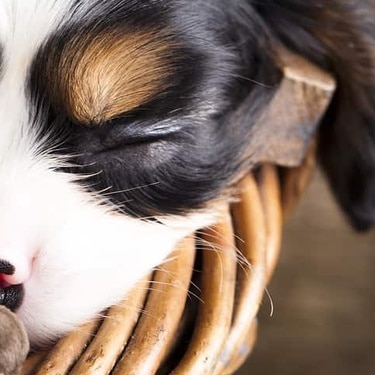
-
Find the right food for your petTake this quiz to see which food may be the best for your furry friend.Find the right food for your petTake this quiz to see which food may be the best for your furry friend.Health CategoryFeatured products
 Adult Large Breed Chicken & Barley Recipe Dog Food
Adult Large Breed Chicken & Barley Recipe Dog FoodSupports healthy joints, lean muscle, and beautiful coat for large breed dogs
Shop Now Adult Light Large Breed Chicken Meal & Barley Recipe Dog Food
Adult Light Large Breed Chicken Meal & Barley Recipe Dog FoodFewer calories for less active large breed dogs
Shop Now Hill's Science Diet Adult Healthy Mobility Large Breed Chicken Meal, Barley & Brown Rice Recipe Dog Food
Hill's Science Diet Adult Healthy Mobility Large Breed Chicken Meal, Barley & Brown Rice Recipe Dog FoodAdvanced nutrition shown to support joint health and improve mobility
Shop NowFeatured products Adult Perfect Digestion Chicken, Barley & Whole Oats Recipe Cat Food
Adult Perfect Digestion Chicken, Barley & Whole Oats Recipe Cat FoodHill's Science Diet's breakthrough nutrition supports ultimate digestive well-being & healthy microbiome
Shop Now Adult Sensitive Stomach & Skin Pouch Variety 12 Pack Cat Food, Chicken & Beef, Salmon & Tuna
Adult Sensitive Stomach & Skin Pouch Variety 12 Pack Cat Food, Chicken & Beef, Salmon & TunaCarefully made, gourmet daily nutrition. Tasty chunks with Salmon & Tuna in a decadent gravy. Supports digestive health, nourishes skin and promotes a lustrous fur.
Shop Now Adult Oral Care Chicken & Brown Rice Recipe Cat Food
Adult Oral Care Chicken & Brown Rice Recipe Cat FoodClinically proven kibble technology to reduce plaque & tartar build-up
Shop Now -
DogCat
- Cat Tips & Articles
-
Health Category
- Weight
- Skin & Food Sensitivities
- Urinary
- Digestive
- Kidney
- Dental
- Serious Illness
-
Life Stage
- Kitten Nutrition
- Adult Nutrition
Featured articles Fun Ideas for Kids and Pets This Summer
Fun Ideas for Kids and Pets This SummerOutdoor summer activities with your dog or cat can be fun for kids, too. Learn how they also teach kids responsibility & creates a bond with their pet.
Read More Cat vs. Dog: Which Is the Best Pet for Me?
Cat vs. Dog: Which Is the Best Pet for Me?Learn about important differences between dogs and cats, such as cost & space considerations. These factors can help you decide which pet is best for you.
Read More Adopting a Pet: What You Need to Know
Adopting a Pet: What You Need to KnowLearn the basics of adopting a pet, including where to begin and common questions you should ask yourself when deciding which kind of pet is best for you.
Read More -


Stories of animals adopting other animals are heartwarming. There are stories like Owen and Mzee, the baby hippo and 130-year-old tortoise or Kasi, the cheetah and Mtani, his canine companion were animals of different species form an unlikely bond. There are also many examples of household pets becoming the best of friends after adoption including orphaned dogs being cared for by an adult cat and vice versa
A Surprising Beginning

Nicole Bawol experienced this phenomenon herself when the Humane Society of Northwestern Pennsylvania executive director brought home a month-old foster kitten. The kitten was just a few weeks old when she was found in a parking lot, her leg badly damaged. A veterinarian was forced to amputate the leg and no one knew whether the tiny fluffball would live.
Nicole brought the cat home to care for her post-surgery to give her the best chance of survival. She'd never had a cat in her Erie, Pennsylvania home before and was shocked when her dog, a golden retriever named Molly, was instantly smitten with the tiny kitten.
"We had to keep the kitten in a cage for a while because she was healing from the surgery," Nicole said. "Molly would just lay outside and watch her."
Whenever Nicole took the kitten from the enclosure, Molly wanted to sniff and lick the little cat.
"I was really surprised," Nicole said. "I had no idea she'd react in such a maternal way."
Why Do Animals Adopt Other Animals?
There hasn't been much formal research on animals adopting other animals, but Clive Wynne, a professor of psychology at Arizona State University, told The New York Times that most known interactions take place "in a human-controlled environment."
Marc Bekoff, a professor emeritus of ecology and evolutionary biology at the University of Colorado, Boulder, said he thinks age matters. At least one of the animals involved in interspecies relationships is often a baby when first introduced to his or her companion.
That was certainly the case for the teeny tiny Hope and two-year-old Molly.


Tasty Tips
Young pets may need several visits in their first year for vaccinations. Adult pets generally benefit from annual check-ups, while senior or special-needs pets might require more frequent visits.
An Inseparable, Unlikely Pair
It took about a month for Hope to be well enough to begin roaming the house, learning to totter along on her three legs. Molly would occasionally gently pick up the tiny cat in her mouth—just like a mother dog would do for a puppy—to help her along. The kitten would nap curled up on the big dog's warm back.
Nicole had no intention of keeping the cat. She just planned to foster her until she was well enough to be adopted. But her 10-year-old daughter—who named the cat Hope—convinced Nicole otherwise.
"She said, 'Mommy we're keeping her. You can't take her away because Molly would be so sad,'" Nicole said. "I knew she was right. And that's how Hope came to be part of our family."
Now, the cat and dog sleep together side-by-side at night, and watch the neighborhood together through the glass in the front door during the day. When the mailman approaches Molly barks. The cat hisses. "She thinks she's a dog," Nicole said. "She really does."
Nicole said she believes Hope and Molly are happier because of their bond.
"I'm thrilled to see their relationship," she said. "They're the best of friends."
Is Your House Right for Two Animals?
If you already have a cat or dog and are thinking about adopting an animal of a different species you may wonder if that would really work in your household. It's true that there is a stigma that dogs and cats are the worst of enemies, but that isn't always the case, as Hope and Molly have shown. Each species has its own unique characteristics and their personalities vary from pet to pet, so it's not always easy to tell if everyone will get along well. The easiest way to tell if your dog or cat is ready for a new pet in the house is to understand their current personality. If your dog or cat isn't receptive to change or gets anxiety when loud noises or lots of action happen in your home, they may struggle to take to another pet being in the household. However, if they are very docile and affectionate, listen to you give them a command and do well around other people or animals, they might welcome a new friend into the house.
It is important to Socialise your pets when you first bring home a new companion. Introduce them slowly at first in small supervised interactions and lengthen their encounters over time if they respond well to one another. If you have opportunity to invite a friend or family member over that has a pet of the opposite species of yours, you might be able to gauge how your current pet will react to another fur ball in the house. It is vital that you never force a relationship on either pet. It is important that you really consider both pets before adopting a second one because returning a pet to the shelter is very hard on that pet.
If you decide to adopt a second pet, remember that patience is key. Animals of different species can get along well as long as they are given proper time and space to adjust to the new pet in the home. Over time you might just find out that they can become the best of friends... or at least tolerate each other.


Kara Murphy is a freelance writer and pet parent who lives in Erie, Pa. She has a goldendoodle named Maddie.
Related products

Advanced nutrition shown to support joint health and improve mobility

Fewer calories for less active dogs

Fewer calories for less active large breed dogs

Supports healthy joints, lean muscle, and beautiful coat for large breed dogs
Related articles

Learn about important differences between dogs and cats, such as cost & space considerations. These factors can help you decide which pet is best for you.

Open admission animal shelters help end animal abandonment, homelessness, and unnecessary euthanasia. Learn more about the shelters and how you can help.

Learn the basics of adopting a pet, including where to begin and common questions you should ask yourself when deciding which kind of pet is best for you.

Outdoor summer activities with your dog or cat can be fun for kids, too. Learn how they also teach kids responsibility & creates a bond with their pet.

Put your pet on a diet without them knowing
Our low calorie formula helps you control your pet's weight. It's packed with high-quality protein for building lean muscles, and made with purposeful ingredients for a flavourful, nutritious meal. Clinically proven antioxidants, Vitamin C+E, help promote a healthy immune system.
Put your pet on a diet without them knowing
Our low calorie formula helps you control your pet's weight. It's packed with high-quality protein for building lean muscles, and made with purposeful ingredients for a flavourful, nutritious meal. Clinically proven antioxidants, Vitamin C+E, help promote a healthy immune system.

